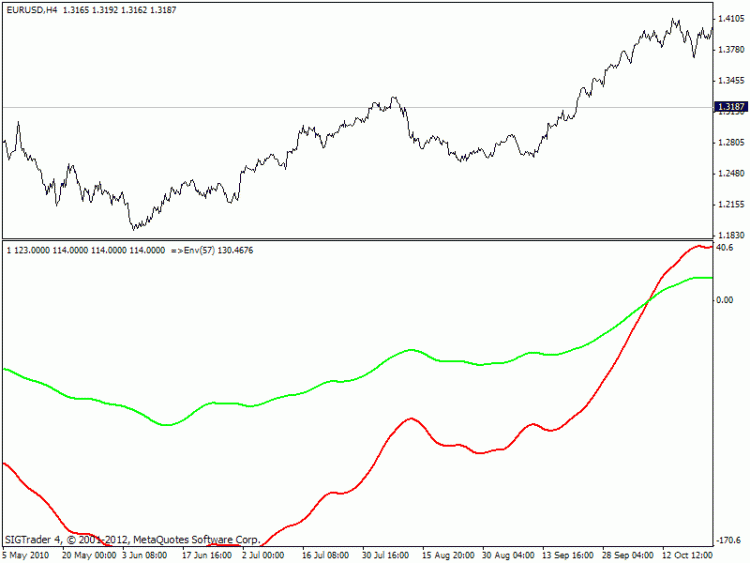You are missing trading opportunities:
- Free trading apps
- Over 8,000 signals for copying
- Economic news for exploring financial markets
Registration
Log in
You agree to website policy and terms of use
If you do not have an account, please register
Why go so far?
I'd rather deal with ordinary turkeys...
I always try to find the optimum window width in my TCs. It varies between 30-70 observations (for H1).
What kind of window exactly? For example, a Gaussian one suppresses boundary effects very significantly compared to a regular rectangular one (it will also be Gaussian in the frequency domain, i.e. it will give -40 dB per octave without any side maxima). The same reactivity can then be achieved by taking more signal values into account.
Why go so far?
I'd rather deal with ordinary turkeys...
Who's that?)
Private Dersu !
At ease! What are these envelopes, red and green?
Envelopes as envelopes.
Inserted.
Saturday, holiday...
Get off the subject ?
If we look at " H is more characteristic of the external environment", we should pay attention to the English terms used in connection with Hirst. Here is a copy-paste from the BP monograph:
establishing fractal geometry as a subject of study.
Please note these words
Some time series exhibit marked correlations at high lags
И
shows that long-memory
I tried to find out: what is long-memory? It turns out autocorrelations over 40 observations! But in quotes such a long correlation of one sign is extremely rare. At any rate, after spending an hour, I didn't find it.
A large number of people try to use the Hurst index. Not once have I seen a positive result. Maybe we should first find cotiers. in which long memory?
Peters gives an interesting definition of long memory. Read it. There is a lot of interesting information in his books on this subject. According to him such processes cannot be measured by trivial ACF. ACF works on a scale of 5-6 lags and that's it. If H is expressed as a moving particle with spread equal to square root of distance, then we get a special case of normal distribution StdDev = Sqrt(T) = T^(0.5). Now, if the scattering of the particle is slightly above or below 0.5 it is possible in one and only one case: the particle must remember its past state and hence such a process will possess a memory. I.e. H is not a characteristic of external action, but depends on previous state of the process. And if the escape trajectory is preserved, it means that it depends on previous values and the memory period can be calculated. And it often happens that on all scales of calculations the slope angle does not change, and at the same time, it is not equal to 0.5. In this case, the process is said to be a true Hearst process with infinite memory. Except that ACF will not show anything of the kind.
You can identify this very long memory in any quotes. But ACF is not suitable here.
Peters gives an interesting definition of long memory. Read it. There is a lot of interesting stuff in his books on this subject. According to him such processes cannot be measured by trivial ACF. ACF works on a scale of 5-6 lags and that's it. If H is expressed as a moving particle with spread equal to square root of distance, then we get a special case of normal distribution StdDev = Sqrt(T) = T^(0.5). So, if the scattering of the particle is slightly above or below 0.5 it is possible in one and only one case: the particle must remember its past state and hence such process will possess a memory. I.e. H is not a characteristic of external action, but depends on previous state of the process. And if the escape trajectory is preserved, it means that it depends on previous values and the memory period can be calculated. And it often happens that on all scales of calculations the slope angle does not change, and at the same time, it is not equal to 0.5. In this case, the process is said to be a true Hearst process with infinite memory. Except that ACF will not show anything of the kind.
Unfortunately, I do not have my own opinion on this matter.
But I can refer you to the book
Cowpertwait and A.V. Metcalfe, Introductory Time Series with R, 159
Use R, DOI 10.1007/978-0-387-88698-5 8,
© Springer Science+Business Media, LLC 2009
Chapter 8 of which describes the FARIMA fitting process. ACF is used in this process.
Attached is the text. Unfortunately, the formulas and theoretical part did not turn out.
But the FARIMA fitting process is specifically described